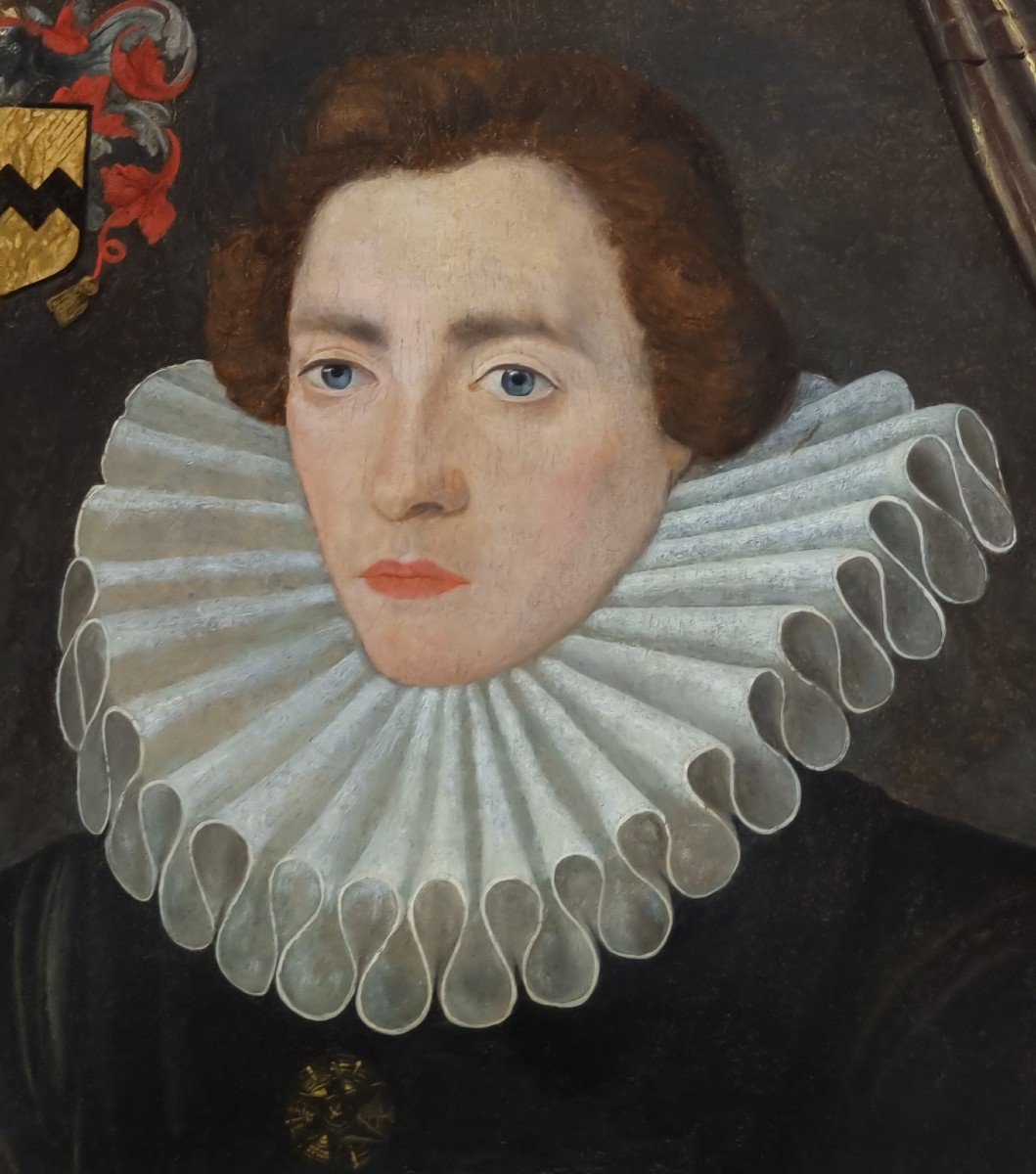Attributed to Hieronymus Custodis (died 1593)
This magnificent portrait was painted during the last quarter of the 16th century – the Elizabethan era – the golden age in English History when Queen Elizabeth I was on the throne. It is a splendid survival from circa 1587, a time that is sandwiched between two golden ages of English renaissance culture, the reigns of Henry VIII and Charles I. This period produced a style of painting quite unlike that anywhere else in Europe and one that deserves serious assessment.
The motivation for portraiture during this period was not aesthetic, but rather dynastic - a means to record ancestors. For most individuals the idea of a painting as a work of art perhaps never existed; it was primarily an expression of rank and class. There is not a huge milieu of works remaining from this age and it must also be noted that of the two percent of the population that made up the gentry classes, many would have owned no portraits at all.
Just a couple of years after our portrait was painted, from about 1590, English painting developed on another course, driven mainly by the artists Marcus Gheeraerts the Younger and Isaac Oliver; they depicted a new mood that was pervading Elizabethan and Jacobean society, which was that of romantic melancholy. Elizabethan painting came to an end when Henry, Prince of Wales, sought a complete change of style of his father’s court. In 1610 and 1612 he gathered the talent needed to do just that and invited the Dutch painter Miereveldt, who was seen as the perfect proponent for an updated style, to England.
The portrait is emblazoned with the coat of arms of the Vavasour family - great landowners in Yorkshire and Lincolnshire for centuries; their history dates to Norman times. They are featured on the Battle Abbey Roll and their main seat was Hazlewood Castle, near Tadcaster, from the time of the Domesday Book until 1908. The Vavasours are of Anglo-Norman descent and the various branches of the family are said to have descended from William le Vavasour. During the years between the English Reformation up until the Catholic Emancipation, the Vavasours were noted as a recusant family for remaining staunchly Catholic despite being fined numerous times. By showing up at services several times a year and pretending to conform to Anglicanism, they largely escaped persecution and managed to retain their property and wealth.
The sitter is probably Sir Thomas Vavasour (1560-1620) who was a member of Elizabethan Parliaments. Sir Thomas was the oldest son of Henry Vavasour of Copmanthorpe, Yorks. and Margaret Knyvet. He married Mary Dodge and the couple had four sons and two daughters. His sister, Anne, was Gentlewoman of the Bedchamber about 1580. In 1585 he went over to the Netherlands as Captain of Foot from Yorkshire, retaining this command until 1591, distinguishing himself in an attack on a sconce near Arnhem in Oct 1585, and again two years later. His service in the Netherlands also advanced Vavasour at home. He is thought to have been knighted before August 1595.
Following military service, he was a Gentleman Pensioner until the death of Queen Elizabeth at Richmond Palace in March 1603. After the accession of James I, Vavasour was made Butler of the Port of London and in 1604 he was appointed Knight Marshal of the Household, a role confirmed to him for life. He died in 1620.
Vavasour is credited with the building of Ham House in 1610.
Oil on oak panel in carved and parcel gilt frame. On the reverse is a seal in red wax.
Hieronimo Custodis (Hieronymus, Heironimos) (died c.1593) was a Flemish portrait painter active in England in the reign of Elizabeth I. Practically nothing is known as Hieronimo Custodis the man, apart from the signatures on his pictures which tell us that he was a native of Antwerp; he was certainly active there in 1585. His signed works begin in 1587 and there is little to suggest that he came to England much before 1585. It is thought that he left Antwerp after its fall in 1585, prompted by the tragic surrender of the city to the Duke of Parma in 1585 which led to an exodus of most of the remaining protestants. In 1589 he lived in Hogg Lane “neare the (Higstriete) barres” and was described as a 'picturemaker' or 'portrature maker'. It has been documented that Sir Arthur Throckmorton referred to him as a portraitist: “Jeronimo' was paid £ 4 for a portrait of his pregnant wife Anne.
He married Catharina van Herssale (from Brussels). Their daughter, Susanna, was baptised on 2 February 1589 at St. Botolph without Aldgate, and their son, Jacobus was baptised on 2 March 1591. He joined the Dutch Church Austin Friars on 29 October 1592 and was actively working up to 1593, which is presumably the year of his death, as his widow remarried that same year. The artist was able to convey a sense of psychological sensitivity to the sitters in his work. His portraits can be easily identified.
Provenance: Phillip's, London, Dec 1982 [Lot 37] as “Custodis. Portrait of a Young Man, wearing a dark doublet and ruff collar and cuffs, and holding a sword, on Panel”
Measurements: Height 68cm, Width 52cm framed (Height 26.75”, Width 20.5” framed


























 Le Magazine de PROANTIC
Le Magazine de PROANTIC TRÉSORS Magazine
TRÉSORS Magazine Rivista Artiquariato
Rivista Artiquariato
